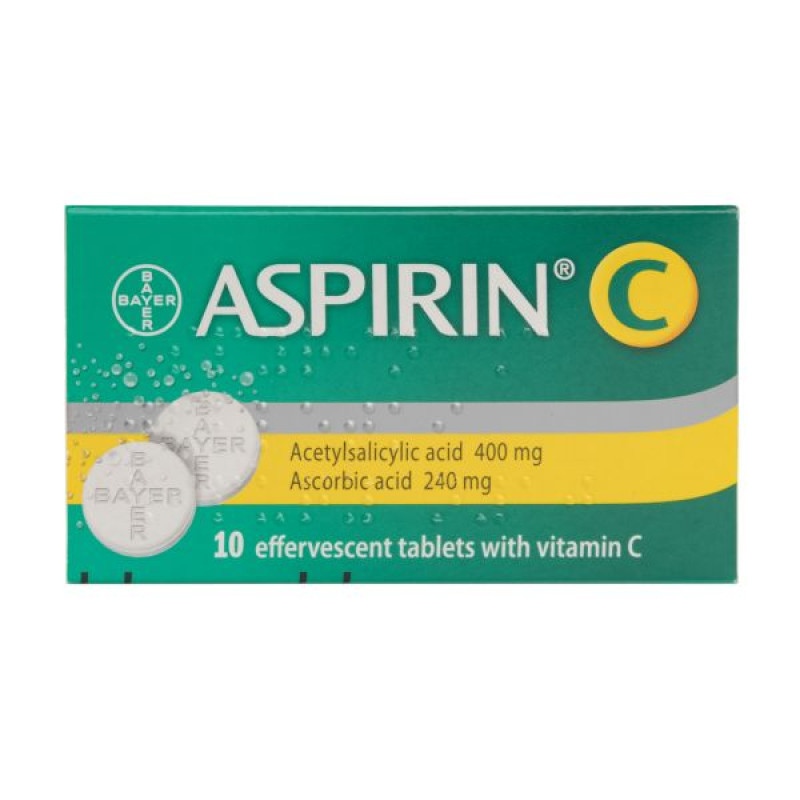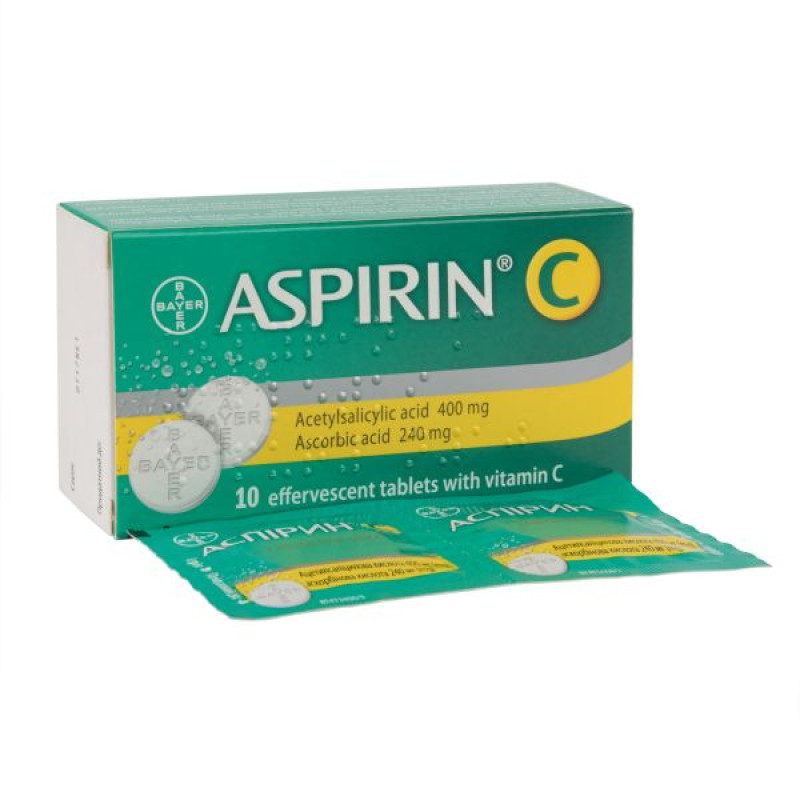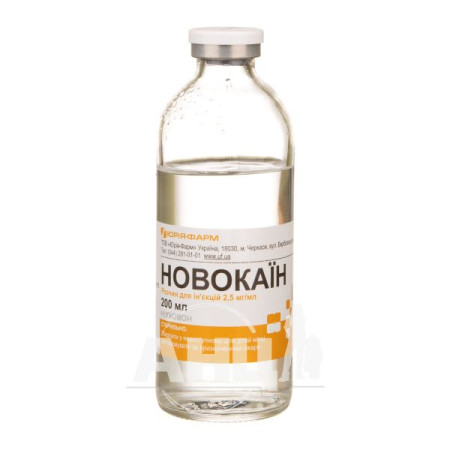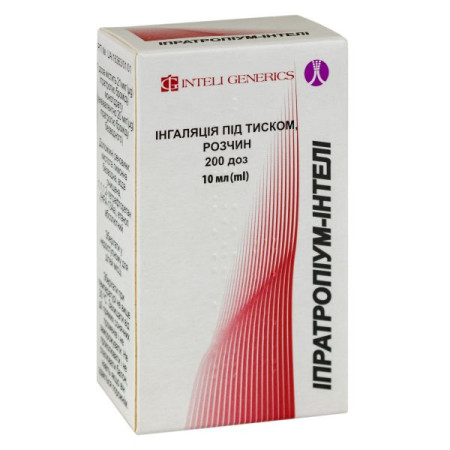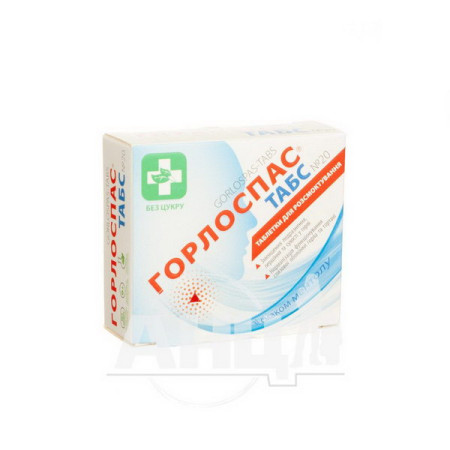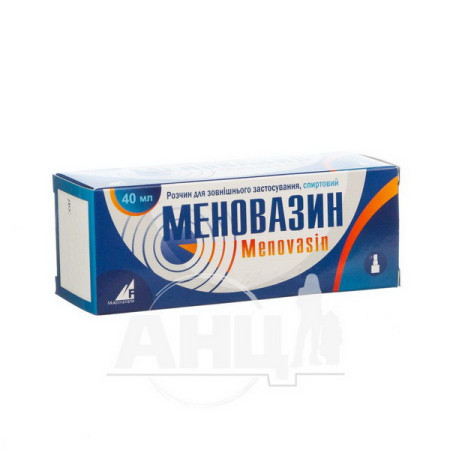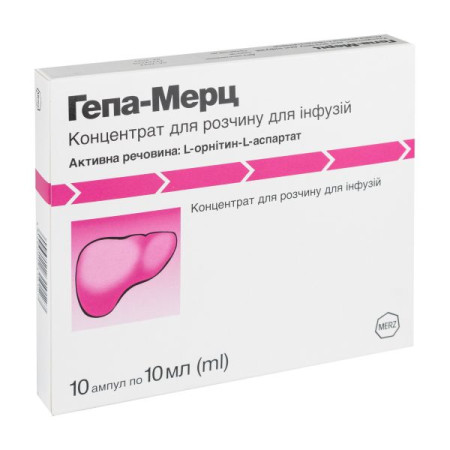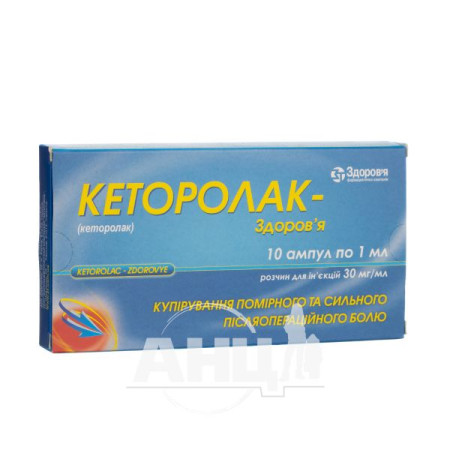Aspirin C effervescent tablets No. 10
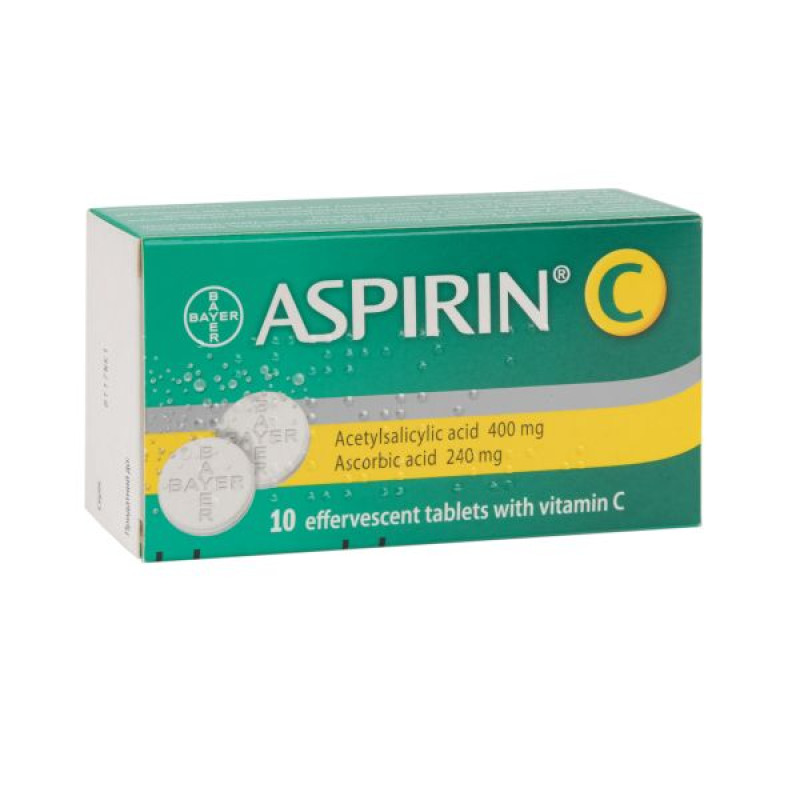
Instructions for use Aspirin C effervescent tablets No. 10
Composition
active ingredients: acetylsalicylic acid and ascorbic acid;
1 tablet contains 400 mg of acetylsalicylic acid and 240 mg of ascorbic acid (vitamin C);
excipients: sodium dihydrocitrate, sodium bicarbonate, anhydrous citric acid, anhydrous sodium carbonate.
Dosage form
Effervescent tablets.
Main physicochemical properties: white tablets with engraving in the form of a “Bayer cross” on one side of the tablet.
Pharmacotherapeutic group
Analgesics and antipyretics. Acetylsalicylic acid. ATX code N02B A01.
Pharmacological properties
Pharmacodynamics
Acetylsalicylic acid belongs to the group of nonsteroidal anti-inflammatory drugs (NSAIDs) with analgesic, antipyretic and anti-inflammatory properties. Its mechanism of action is the irreversible inactivation of cyclooxygenase enzymes, which play an important role in the synthesis of prostaglandins.
When taken orally in doses of 0.3 g to 1 g, acetylsalicylic acid is used to relieve pain and conditions accompanied by fever, such as colds, to reduce fever and relieve pain in joints and muscles.
Acetylsalicylic acid inhibits platelet aggregation by blocking the synthesis of thromboxane A2.
The water-soluble vitamin ascorbic acid is part of the body's defense system against oxygen radicals and other oxidants of both endogenous and exogenous origin, which play a special role in inflammatory processes and the functioning of leukocytes.
The results of in vitro and ex vivo studies have shown that ascorbic acid has a positive effect on the human leukocyte immune response.
Ascorbic acid is necessary for the synthesis of intracellular substances (mucopolysaccharides), which, together with collagen fibers, are responsible for the integrity of capillary walls and, thus, reduce vascular permeability.
The addition of ascorbic acid to acetylsalicylic acid reduces gastrointestinal damage and oxidative stress. These benefits may be the result of an improved tolerability profile of the combination of acetylsalicylic acid with ascorbic acid compared to acetylsalicylic acid alone.
Pharmacokinetics
After oral administration, acetylsalicylic acid is rapidly and completely absorbed from the gastrointestinal tract. During and after absorption, it is converted into the main active metabolite - salicylic acid. The maximum concentration of acetylsalicylic acid in the blood plasma is reached after 10-20 minutes, salicylates - after 20-120 minutes.
Acetylsalicylic and salicylic acids are completely bound to blood plasma proteins and are rapidly distributed in the body.
Salicylic acid crosses the placenta and is excreted in breast milk.
Salicylic acid is metabolized in the liver. The metabolites of salicylic acid are salicylicuric acid, salicylphenol glucuronide, salicylacyl glucuronide, gentisic acid, and gentisinuric acid.
The elimination kinetics of salicylic acid are dose-dependent, as metabolism is limited by the activity of hepatic enzymes. The half-life is dose-dependent and increases from 2-3 hours at low doses to 15 hours at high doses. Salicylic acid and its metabolites are excreted from the body mainly by the kidneys.
After oral administration, ascorbic acid is absorbed in the intestine via a Na+-dependent active transport system, most actively in the proximal intestine. Absorption is not proportional to the dose. With increasing daily oral dose of ascorbic acid, its concentration in blood plasma and other body fluids does not increase proportionally, but tends to approach the upper limit.
Ascorbic acid is filtered by the glomerular system of the kidneys and reabsorbed by the proximal tubules under the action of an active Na+-dependent process. The main metabolites are excreted in the urine in the form of oxalates and diketogulonic acid.
Indication
Mild to moderate pain, such as headache, toothache, period pain in women, painful symptoms associated with colds (e.g., headache, sore throat, pain in the extremities). Fever.
Contraindication
Hypersensitivity to acetylsalicylic acid, other salicylates, ascorbic acid or to any component of the drug. Bronchial asthma caused by the use of salicylates or other NSAIDs in history. Acute gastrointestinal ulcers. Hemorrhagic diathesis. Severe kidney disease; severe renal failure. Urolithiasis. Severe liver failure. Severe heart failure. Tendency to thrombosis, thrombophlebitis. Diabetes mellitus.
Combination with methotrexate at a dosage of 15 mg/week or more (see section “Interaction with other medicinal products and other types of interactions”).
Interaction with other medicinal products and other types of interactions
The use of acetylsalicylic acid with methotrexate at doses of 15 mg/week or more increases the hematological toxicity of methotrexate (reduction in renal clearance of methotrexate by anti-inflammatory agents and displacement of methotrexate from plasma protein binding by salicylates).
Combinations that should be used with caution.
When using acetylsalicylic acid with methotrexate in doses less than 15 mg/week, the hematological toxicity of methotrexate increases (reduction in renal clearance of methotrexate by anti-inflammatory agents and displacement of methotrexate from plasma protein binding by salicylates).
Concomitant use of ibuprofen prevents irreversible platelet inhibition by acetylsalicylic acid. Treatment of patients at risk of cardiovascular disease with ibuprofen may limit the cardioprotective effect of acetylsalicylic acid.
The simultaneous use of high doses of salicylates with NSAIDs (due to a mutually reinforcing effect) increases the risk of ulcers and gastrointestinal bleeding.
The simultaneous use of Aspirin® C and anticoagulants increases the risk of bleeding.
Concomitant use with uricosuric agents such as benzobromarone, probenecid reduces the effect of uric acid excretion (due to competition for uric acid excretion by the renal tubules).
When used simultaneously with digoxin, the concentration of the latter in blood plasma increases due to reduced renal excretion.
With the simultaneous use of high doses of acetylsalicylic acid and oral antidiabetic drugs from the group of sulfonylurea derivatives or insulin, the hypoglycemic effect of the latter is enhanced due to the hypoglycemic effect of acetylsalicylic acid and the displacement of sulfonylurea bound to blood plasma proteins.
Diuretics in combination with high doses of acetylsalicylic acid reduce glomerular filtration by reducing prostaglandin synthesis in the kidneys.
Systemic glucocorticosteroids (except hydrocortisone, which is used for replacement therapy in Addison's disease). When using acetylsalicylic acid simultaneously with corticosteroids, the level of salicylates in the blood decreases and the risk of overdose increases after the end of treatment, as well as the risk of gastrointestinal bleeding increases.
ACE inhibitors in combination with high doses of acetylsalicylic acid cause a decrease in glomerular filtration due to inhibition of vasodilator prostaglandins and a decrease in the hypotensive effect.
Selective serotonin reuptake inhibitors: Increased risk of upper gastrointestinal bleeding due to possible synergistic effect.
When used simultaneously with valproic acid, acetylsalicylic acid displaces it from its association with blood plasma proteins, increasing the toxicity of the latter.
Ethyl alcohol contributes to damage to the mucous membrane of the gastrointestinal tract and prolongs bleeding time due to the synergism of acetylsalicylic acid and alcohol.
Ascorbic acid reduces the toxicity of sulfonamide drugs, reduces the effect of heparin and indirect anticoagulants, promotes iron absorption, increases the absorption of penicillin, ethinyl estradiol, aluminum (must be taken into account when used simultaneously with antacids containing aluminum); enhances the side effect of salicylates (risk of crystalluria). Quinoline drugs, calcium chloride, salicylates, glucocorticosteroids with prolonged use reduce vitamin C reserves in the body. With simultaneous use, ascorbic acid reduces the chronotropic effect of isoprenaline; in high doses, it increases the excretion of mexiletine by the kidneys. Barbiturates and primidone increase the excretion of ascorbic acid in the urine. Ascorbic acid reduces the therapeutic effect of neuroleptics (phenothiazine derivatives), tubular reabsorption of amphetamine and tricyclic antidepressants. Taking ascorbic acid with deferoxamine increases tissue toxicity of iron, especially in the heart muscle, which can lead to decompensation of the circulatory system. Vitamin C can be taken 2 hours after the injection of deferoxamine. In high doses, ascorbic acid affects the resorption of vitamin B12. Ascorbic acid increases the excretion of oxalates in the urine, thus increasing the risk of oxalate stones in the urine.
Application features
Aspirin® C is used with caution in:
In patients with allergic complications, including bronchial asthma, allergic rhinitis, urticaria, skin itching, swelling of the mucous membrane and nasal polyps, as well as in combination with chronic respiratory tract infections and in patients with hypersensitivity to NSAIDs, bronchospasm, bronchial asthma attacks or other hypersensitivity reactions may develop during treatment with Aspirin® C.
Due to its effect on platelet aggregation, which lasts up to several days after administration, acetylsalicylic acid may increase the tendency to bleed during and after surgery (including minor operations such as tooth extraction).
When using low doses of acetylsalicylic acid, uric acid excretion may be reduced. This may lead to gout in patients with reduced uric acid excretion.
In patients with glucose-6-phosphate dehydrogenase deficiency, acetylsalicylic acid may cause hemolysis or hemolytic anemia. Factors that increase the risk of hemolysis are, for example, the use of high doses, fever or acute infections.
Prolonged use of analgesics can lead to headaches.
Frequent use of painkillers can cause temporary kidney damage with the risk of developing kidney failure (analgesic nephropathy). The risk is particularly high when several different analgesics are used simultaneously.
1 effervescent tablet of Aspirin® C contains 466.4 mg of sodium, which should be taken into account by patients on a sodium-restricted diet.
Ascorbic acid should be used with caution in patients prone to calcium oxalate nephrolithiasis or with recurrent nephrolysis.
When taking high doses and long-term use of the drug, it is necessary to monitor kidney function and blood pressure, as well as pancreatic function.
The drug should be used with caution in patients with a history of mild to moderate kidney disease.
Since ascorbic acid increases iron absorption, its use in high doses can be dangerous for patients with hemochromatosis, thalassemia, polycythemia, leukemia, and sideroblastic anemia. Patients with high iron levels in the body should use the drug in minimal doses.
Absorption of ascorbic acid is reduced with simultaneous consumption of fruit or vegetable juices, alkaline drinks.
Also, the absorption of ascorbic acid may be impaired in intestinal dyskinesias, enteritis, and achilia. Ascorbic acid as a reducing agent may affect the results of laboratory tests, for example, when determining the blood glucose content, bilirubin, transaminase activity, lactate dehydrogenase, etc.
Since ascorbic acid has a mild stimulating effect, the drug is not recommended to be taken at the end of the day.
Long-term use of high doses of ascorbic acid may accelerate its own metabolism, which may cause paradoxical hypovitaminosis after discontinuation of treatment. The recommended dose should not be exceeded.
Should not be used simultaneously with other drugs containing acetylsalicylic acid and vitamin C.
The drug should be used with caution in polycythemia and leukemia.
The result of a test for occult blood in the stool may be false negative.
Ability to influence reaction speed when driving vehicles or other mechanisms
No effect on the ability to drive or use other mechanisms was noted.
Use during pregnancy or breastfeeding
Pregnancy.
Aspirin® C can be used during pregnancy only when other medications are not effective and only after assessing the risk/benefit ratio.
Inhibition of prostaglandin synthesis may adversely affect pregnancy and/or embryonal/fetal development. Available epidemiological data indicate a risk of miscarriage and foetal malformations after the use of prostaglandin synthesis inhibitors in early pregnancy. The risk increases with increasing dose and duration of therapy. According to the available data, the association between the use of acetylsalicylic acid and an increased risk of miscarriage has not been confirmed.
The available epidemiological data on the occurrence of malformations are not consistent, but an increased risk of gastroschisis cannot be excluded with the use of acetylsalicylic acid. The results of a prospective study of exposure in early pregnancy (1-4 months) involving approximately 14,800 mother-child pairs do not indicate any association with an increased risk of malformations.
Animal studies indicate reproductive toxicity.
During the first and second trimesters of pregnancy, preparations containing acetylsalicylic acid should not be prescribed unless clearly necessary. In women who may be pregnant or during the first and second trimesters of pregnancy, the dose of preparations containing acetylsalicylic acid should be as low as possible and the duration of treatment as short as possible.
Cardiopulmonary toxicity (with premature closure of the ductus arteriosus and pulmonary hypertension); renal dysfunction with possible further development of renal failure with oligohydramnios.
Prostaglandin synthesis inhibitors can affect the woman and fetus at the end of pregnancy in the following ways:
possible prolongation of bleeding time, antiplatelet effect that may occur even after very low doses; inhibition of uterine contractions, which may lead to delayed or prolonged labor.
Given this, acetylsalicylic acid is contraindicated during the third trimester of pregnancy.
Fertility
There is some evidence that drugs that inhibit prostaglandin synthesis may impair female reproductive function by affecting ovulation. This effect is reversible and disappears after discontinuation of treatment.
Breast-feeding.
Salicylates and their metabolites penetrate into breast milk in small quantities. Therefore, their use is possible during breastfeeding. However, due to the presence of ascorbic acid in the composition of the drug, it is necessary to refrain from taking the drug during breastfeeding, since ascorbic acid penetrates into breast milk.
Method of administration and doses
Aspirin® C is taken orally after meals.
Effervescent tablets are dissolved in 1 glass of water immediately before taking. The dose of the drug is calculated based on acetylsalicylic acid.
Aspirin® C should not be used for longer than 3-5 days without consulting a doctor.
Adults and children aged 15 and over.
1-2 effervescent tablets as a single dose. Repeated administration is possible after 4-8 hours. The maximum daily dose of acetylsalicylic acid should not exceed 4 g.
Warning.
For patients with concomitant liver or kidney dysfunction, it is necessary to reduce the dose of the drug or increase the interval between applications.
Children
The drug is used in children over 15 years of age.
Do not use acetylsalicylic acid-containing drugs in children with acute respiratory viral infections (ARI), with or without fever, without consulting a doctor. With some viral diseases, especially influenza A, influenza B and chickenpox, there is a risk of developing Reye's syndrome, which is a very rare but life-threatening disease that requires immediate medical attention. The risk may be increased if acetylsalicylic acid is used as a concomitant drug, but a causal relationship in this case has not been proven. If these conditions are accompanied by prolonged vomiting, this may be a sign of Reye's syndrome.
Overdose
Salicylate toxicity (administration of more than 100 mg/kg/day for more than 2 days may cause toxicity) is possible due to chronic intoxication resulting from prolonged therapy, as well as acute intoxication (overdose), which is potentially life-threatening and may be caused, for example, by accidental use by children or overdose.
Chronic salicylate intoxication can be insidious because its signs are nonspecific. Moderate chronic salicylate intoxication, or salicylism, usually occurs only after repeated use of large doses.
Symptoms: Dizziness, tinnitus, deafness, sweating, nausea and vomiting, headache, confusion. These symptoms can be controlled by reducing the dose. Tinnitus is possible at plasma salicylates above 150-300 μg/ml. More serious adverse reactions are observed at plasma salicylates above 300 μg/ml.
Acute intoxication is evidenced by a pronounced change in acid-base balance, which depends on the age of the patient and the severity of intoxication. In children, the most characteristic manifestation is metabolic acidosis. The severity of the condition cannot be assessed solely on the basis of the concentration of salicylates in the blood plasma. The absorption of acetylsalicylic acid may be slowed down due to delayed gastric release, the formation of concrements in the stomach or when the drug is taken in the form of enteric-coated tablets.
Due to the complex pathophysiological effects, signs and symptoms of salicylate poisoning may include:
Mild to moderate intoxication – tachypnea, hyperpnea, respiratory alkalosis. Sweating, nausea and vomiting.
Moderate to severe intoxication - respiratory alkalosis, accompanied by compensatory metabolic acidosis, hyperpyrexia. From the respiratory system: from hyperpnea, non-cardiogenic pulmonary edema to respiratory arrest and asphyxia. From the cardiovascular system: from arrhythmia, hypotension to cardiac arrest. Dehydration, oliguria up to renal failure are also observed; impaired glucose metabolism, ketosis; gastrointestinal bleeding; hematological changes - from platelet suppression to coagulopathies. From the nervous system: toxic encephalopathy and CNS depression, manifested as drowsiness, depression of consciousness up to the development of coma and seizures.
Changes in laboratory and other parameters: alkalemia, alkaluria, acidemia, aciduria, changes in blood pressure, changes in ECG, hypokalemia, hypernatremia, hyponatremia, changes in renal function, hyperglycemia, hypoglycemia (especially in children). Increased level of ketone bodies, hypoprothrombinemia.
Ascorbic acid is a water-soluble vitamin, and excess amounts are excreted in the urine.
However, acute and chronic overdoses of ascorbic acid have been reported in the literature. In patients with glucose-6-phosphate dehydrogenase deficiency, overdose of ascorbic acid can cause oxidative hemolysis, disseminated intravascular coagulation, and significant elevations in serum and urine oxalate levels. Elevated oxalate levels have been shown to lead to calcium deposition in patients undergoing dialysis. In addition, there are several reports that high doses of vitamin C, both orally and intravenously, can cause the formation of calcium oxalate stones in the kidneys, the development of calcium oxalate crystalluria in patients predisposed to increased salt crystallization, the development of tubulointerstitial nephropathy, and acute renal failure due to kidney stones.
With prolonged use of vitamin C in large doses, inhibition of the function of the insular apparatus of the pancreas is possible, which requires monitoring of the condition of the latter.
The use of large doses of vitamin C can lead to vomiting, nausea, or diarrhea, which disappear after its withdrawal.
Treatment.
Treatment of intoxication caused by an overdose of acetylsalicylic acid is determined by the severity, clinical symptoms and is provided by standard methods used in poisoning (gastric lavage, use of activated charcoal, forced diuresis). All measures taken should be aimed at accelerating the removal of the drug and restoring electrolyte and acid-base balance. Depending on the state of acid-base balance and electrolyte balance, infusion of electrolyte solutions is carried out. In case of serious poisoning, hemodialysis is indicated.
Adverse reactions
Gastrointestinal: Dyspepsia, epigastric and abdominal pain, heartburn, diarrhea, nausea, vomiting, stomach cramps; in some cases - inflammation of the gastrointestinal tract, erosive-ulcerative lesions of the gastrointestinal tract, which in rare cases can cause gastrointestinal bleeding and perforation with corresponding laboratory and clinical manifestations.
Rarely - transient hepatic failure with increased liver transaminase levels.
Blood and lymphatic system disorders: Due to its antiplatelet effect on platelets, acetylsalicylic acid may increase the risk of bleeding. Bleeding such as perioperative bleeding, hematomas, urogenital bleeding, epistaxis, gingival bleeding have been observed; rarely or very rarely, serious bleeding such as gastrointestinal bleeding and cerebral hemorrhage (especially in patients with uncontrolled arterial hypertension and/or concomitant use of antihemostatic agents), which in isolated cases can be life-threatening.
Bleeding can lead to acute and chronic posthemorrhagic anemia/iron deficiency anemia (due to so-called occult microbleeding) with corresponding laboratory manifestations and clinical symptoms such as asthenia, pallor of the skin, hypoperfusion.
Hemolysis and the development of hemolytic anemia have been reported in patients with severe glucose-6-phosphate dehydrogenase deficiency.
On the part of the immune system. In patients with individual hypersensitivity to salicylates, allergic reactions may develop, including symptoms such as rash, urticaria, itching, eczema, rhinitis, nasal congestion, and decreased blood pressure. Severe hypersensitivity reactions, including anaphylactic shock, angioedema, and noncardiogenic pulmonary edema, have been observed very rarely. In patients with bronchial asthma, an increased frequency of bronchospasm; allergic reactions of mild to moderate severity, potentially affecting the skin, respiratory system, gastrointestinal tract, and cardiovascular system, may occur.
Nervous system: Headache, dizziness, hearing loss; ringing in the ears and confusion may be signs of overdose. Sleep disturbances.
Others: feeling hot.
With prolonged use in high doses, damage to the glomerular apparatus of the kidneys, the formation of urate and/or oxalate stones in the kidneys and urinary tract, renal failure are possible; damage to the insular apparatus of the pancreas (hyperglycemia, glucosuria) and impaired glycogen synthesis up to the appearance of diabetes mellitus; myocardial dystrophy; thrombocytosis, hyperprothrombinemia, erythrocytopenia, neutrophilic leukocytosis, hemolytic anemia; decreased capillary permeability (possible deterioration of tissue trophism, increased blood pressure), in patients with glucose-6-phosphate dehydrogenase deficiency of blood cells, it can cause hemolysis of erythrocytes; oral cavity dysbacteriosis; impaired zinc and copper metabolism.
Expiration date
3 years.
Do not use after the expiry date stated on the packaging.
Storage conditions
Store out of the reach of children at a temperature not exceeding 25 °C.
Packaging
2 tablets per strip. 5 strips per carton.
Vacation category
Without a prescription.
Producer
Bayer Bitterfeld GmbH.
Location of the manufacturer and its business address
Ortsteil Greppin, Salegaster Chaussee 1, 06803 Bitterfeld-Wolfen, Germany.
There are no reviews for this product.
There are no reviews for this product, be the first to leave your review.
No questions about this product, be the first and ask your question.







